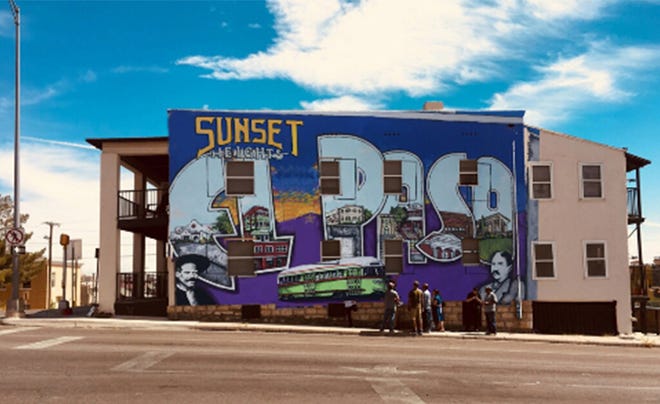Reimagine I-10 Project threatens Sunset Heights neighborhood, historic buildings

The El Paso County Historical Society was founded in 1954 by residents concerned with protecting El Paso’s historical and cultural heritage. To this day, the society works to preserve, protect, and share El Paso’s history with the public. It is for this reason that we release the following statement regarding the Texas Department of Transportation’s Reimagine I-10 project.
TXDOT is conducting an advanced planning study billed as an effort to evaluate the current and future traffic transportation needs along a 55-mile stretch of the Interstate 10 corridor from the New Mexico state line south to FM 3380. If this plan were to become a reality, Reimagine I-10 could become one of the largest transportation projects to occur in El Paso, at a cost of more than $1 billion.
More:Gateways on horizon: TxDOT studies new I-10 frontage roads from Downtown to Spaghetti Bowl
Of particular interest to the society is Segment 2 of Reimagine I-10, which would widen the interstate through the Downtown corridor. This would entail the destruction of several significant and historic properties on Yandell Drive, including the El Paso Holocaust Museum and the Pearl and Jessica apartment complexes. In fact, these buildings stand within the Sunset Heights neighborhood, which is both a locally and federally designated Historic Neighborhood.
Beyond destroying historic structures, the headquarters of the society (the Burges House) and the Sunset Heights neighborhood stand to be dramatically affected. Part of TxDOT’s proposal calls for the creation of high capacity access roads in the Downtown area, which would inevitably increase the intensity of local traffic, noise, and emissions. Moreover, the 104-year-old Burges House Oak, designated as a Famous Tree of Texas by Texas A&M University, will suffer from the long-term consequences created by this project. Lastly, the destruction of multiple bridges will severely impact accessibility and connectivity for pedestrians from Uptown to Downtown El Paso.
In fact, widening the highway might not even be necessary as this section of I-10 is barely on the top 100 congested sections in the state. Moreover, the proposed Borderland Expressway project will address I-10 capacity issues by completing a loop around the Northeast side of El Paso, providing travelers with an alternate route to I-10 and potentially diverting traffic around the city center. This is much more aligned with Plan El Paso, which called for making El Paso less car dependent. It also serves the purpose of preserving historic buildings and neighborhoods.
Want more news like this? Click here to subscribe to elpasotimes.com.
We at the El Paso County Historical Society would like a chance to work with the city and TxDOT on these ideas and develop something more in keeping with the spirit of Plan El Paso and with Chapter 20.20 in El Paso’s City Code, which declares, “The city council finds and declares as a matter of public policy that the protection, enhancement, preservation and use of historic landmarks is a public necessity and is required in the interest of the culture, prosperity, education, safety and general welfare of the people.”
Robert Diaz is spokesman for the El Paso County Historical Society.